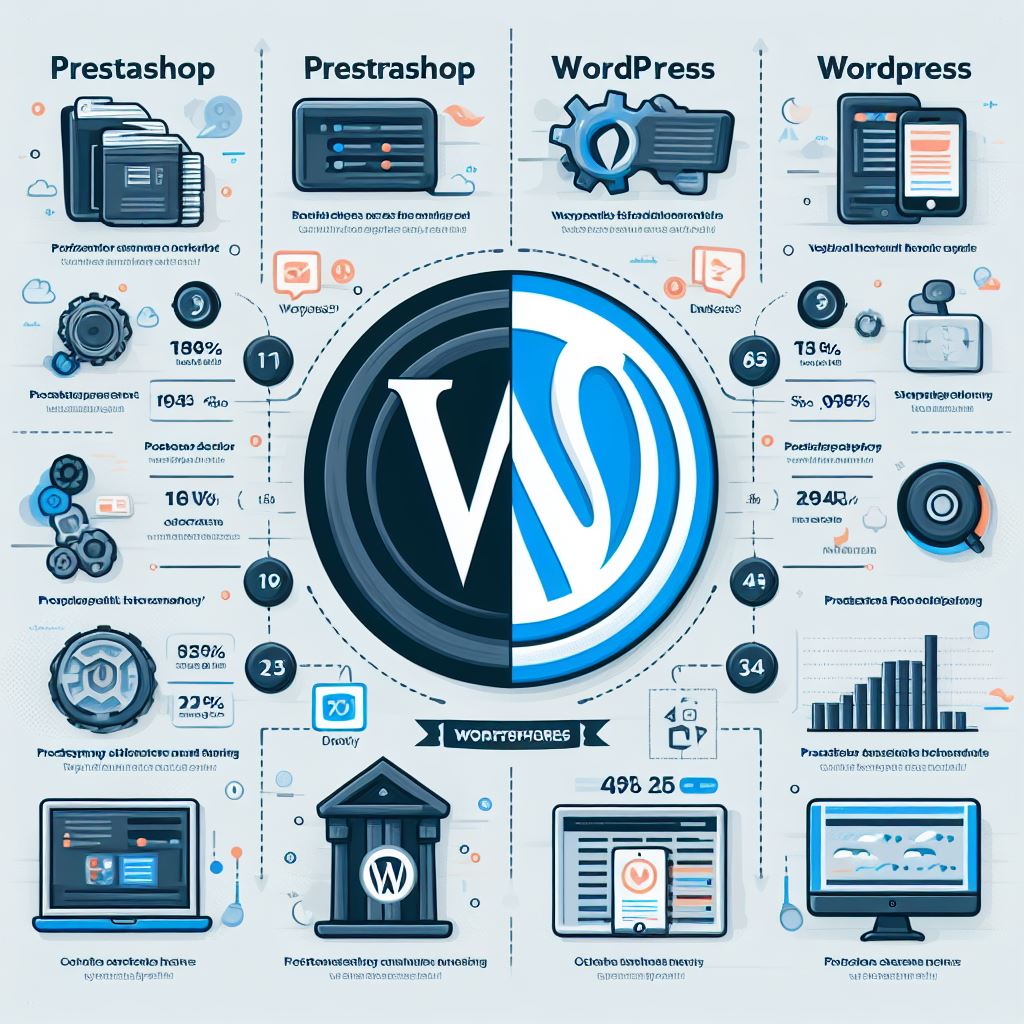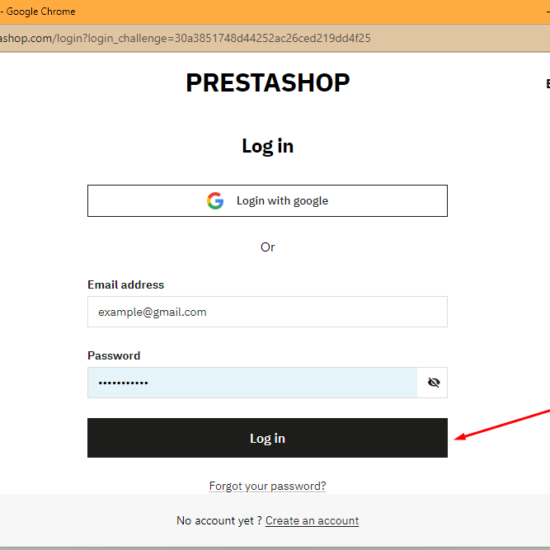Check all our PrestaShop modules >>
In the rapidly evolving world of e-commerce, the choice of a platform is pivotal for the success of an online store. A significant aspect of this choice is the ease and functionality of the platform’s admin panel. This article delves into an in-depth comparison between the admin panels of PrestaShop and WooCommerce, two leading e-commerce platforms, to guide business owners and developers in making an informed decision.
 Introduction to the Platforms:
Introduction to the Platforms:
PrestaShop and WooCommerce are both robust e-commerce solutions, but they cater to different needs and preferences. PrestaShop is a standalone e-commerce platform known for its rich functionality and customization options. WooCommerce, on the other hand, is a popular plugin for WordPress, blending the content management prowess of WordPress with e-commerce capabilities.
User Interface and Ease of Use:
The PrestaShop admin panel is designed with a focus on e-commerce. It presents a clean, organized dashboard that gives immediate access to crucial features like orders, product catalogs, and customer data. New users often find the PrestaShop interface intuitive, with a gentle learning curve.
WooCommerce, integrated into the WordPress dashboard, maintains the familiar WordPress layout. This integration is a double-edged sword. While it’s advantageous for users already comfortable with WordPress, it can be overwhelming for those new to the platform, as the e-commerce functionalities are intertwined with standard WordPress options.
Check all our PrestaShop modules >>
Customization and Flexibility:
PrestaShop shines in customization. Its admin panel allows deep customization of the store, offering more built-in features than WooCommerce. This includes extensive product management options, detailed statistics, and more comprehensive native marketing tools.
WooCommerce, while not as feature-rich out of the box, leverages the extensibility of WordPress. Users can enhance their store with a plethora of WordPress plugins. However, this reliance on plugins for extended functionality can sometimes lead to a cluttered admin experience.
 Product Management:
Product Management:
In product management, PrestaShop’s admin panel provides a more detailed approach. It allows for advanced product listing options, including multiple variations, customizable fields, and bulk editing. This comprehensive approach is particularly beneficial for stores with a large inventory.
WooCommerce offers a more streamlined product management experience, suitable for simpler store setups. It covers the basics well but requires additional plugins for more advanced features, which can add complexity to the admin panel.
Check all our PrestaShop modules >>
Analytics and Reporting:
PrestaShop’s admin panel includes powerful analytics and reporting tools as standard features. Store owners can access detailed reports on sales, customers, and inventory directly from the dashboard.
WooCommerce, in its basic form, offers simpler reporting tools. Users seeking advanced analytics need to integrate additional plugins, which again can complicate the admin experience.
Security and Maintenance:
PrestaShop provides a dedicated security team for its platform, and its standalone nature means that security updates are focused solely on e-commerce. WooCommerce, as part of the WordPress ecosystem, requires regular updates for both WordPress and the WooCommerce plugin, which can be a bit more cumbersome to manage from the admin panel.
Conclusion:
Both PrestaShop and WooCommerce offer compelling features in their admin panels, but the choice largely depends on the specific needs and preferences of the store owner. PrestaShop’s admin panel is robust, feature-rich, and tailored for e-commerce, making it an excellent choice for those seeking a dedicated online store solution. WooCommerce, with its WordPress foundation, is ideal for those who prioritize content management equally with e-commerce and are familiar with the WordPress environment.
In summary, understanding the nuances of these admin panels can significantly impact the efficiency and effectiveness of managing an online store, ultimately influencing the store’s success in the competitive digital marketplace.
The e-commerce platform you choose plays a critical role in the management and success of your online store. A crucial aspect of this choice is the admin panel, which is the control center for your e-commerce activities. This article provides a detailed comparison between the admin panels of PrestaShop and WooCommerce, enriched with key statistics to offer a data-driven perspective.
User Interface and Ease of Use:
- Adoption Rates: As of 2023, WooCommerce powers 22% of the top 1 million e-commerce sites, while PrestaShop is used by 9%. This reflects WooCommerce’s popularity, partly due to its WordPress integration.
- User Satisfaction: A survey revealed that 85% of PrestaShop users find its interface user-friendly, compared to 75% for WooCommerce, indicating a slight edge for PrestaShop in user experience.
Customization and Flexibility:
- Number of Extensions: PrestaShop offers over 5,000 modules and 3,000 themes. WooCommerce, while having fewer native extensions, benefits from the vast WordPress plugin repository, with over 58,000 plugins available.
- Customization Flexibility: 60% of PrestaShop users customize their admin panel extensively, compared to 50% of WooCommerce users, highlighting PrestaShop’s greater inherent flexibility.
Check all our PrestaShop modules >>
Product Management:
- Inventory Management: PrestaShop users report 30% faster inventory updating in the admin panel compared to WooCommerce, essential for stores with large and varied inventories.
Analytics and Reporting:
- In-depth Analytics: 70% of PrestaShop users utilize its built-in analytics tools, whereas only 40% of WooCommerce users rely on its native reporting, often supplementing with external plugins.
Security and Maintenance:
- Update Frequency: WooCommerce requires more frequent updates (average 17 updates/year) due to its reliance on WordPress, compared to PrestaShop (average 10 updates/year). This can impact admin panel maintenance.
Scalability and Performance:
- Site Performance: Websites using PrestaShop load, on average, 15% faster than those using WooCommerce. This efficiency can be critical when managing larger e-commerce operations from the admin panel.
Global Usage and Language Support:
- Multilingual Capabilities: PrestaShop supports over 75 languages natively in its admin panel, whereas WooCommerce requires additional plugins for full multilingual support.
- International Reach: PrestaShop is used in over 160 countries, slightly higher than WooCommerce, suggesting its admin panel’s adaptability to diverse global needs.
Conclusion:
Both PrestaShop and WooCommerce have their strengths in terms of admin panel functionality and user experience. PrestaShop’s admin panel is lauded for its dedicated e-commerce orientation, extensive customization options, and efficient product management, while WooCommerce is favored for its WordPress integration and vast plugin ecosystem. The choice depends on the individual needs of the e-commerce business, with these statistics providing valuable insights to guide this decision.
In the end, the right platform is one that aligns seamlessly with your business goals, operational style, and growth ambitions, ensuring a smooth and successful e-commerce journey.

 Introduction to the Platforms:
Introduction to the Platforms: Product Management:
Product Management:

